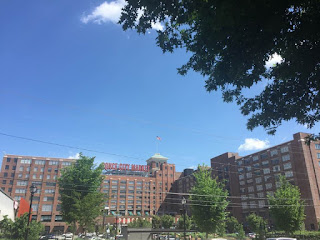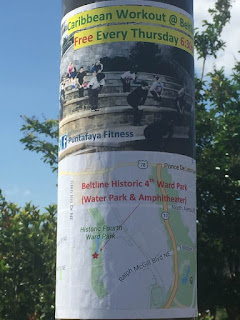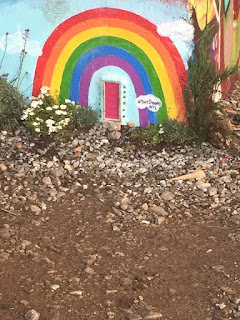As the semester
comes to an end, I am able to reflect on all that I have learned about the
Atlanta Beltline project over the last few months. I sought to understand
what role public health had in the design and development of the Eastside trail
of the Atlanta Beltline. My primary
focus within the public health features of the Atlanta Beltline has been on the
specific methods of increasing overall health and wellness of area residents by
focusing on fitness and nutrition. I look specifically at features of the
built environment which aid in improved fitness and nutrition habits of local
Old Fourth Ward and Inman Park Residents, such as art and architecture, social
cohesion, parks and green space, food access and sports and other outdoor
activities. It was exciting to learn that public health initiatives were
included in all development and planning phases of Atlanta Beltline project. From
the initial planning phases, environmental assessments were conducted to ensure
the project remained conscience of its ecological footprint. Even landscape design was taken into account
in order to maximize impact on improving mental health function. I discovered that in many ways,
projects like the Atlanta Beltline and New York City’s Skyline are significantly
public health focused. On the surface,
projects such as these may appear to be purely a city beautification
endeavor. However, when examined more
closely, beautification efforts improve the quality of life of area residents
which in turn improves mental as well as physical health. This is the ultimate purpose
of the Atlanta Beltline project.
As part of the
overall project, I was fortunate to be able to attend my first community
engagement meeting which detailed updates to the Westside Trail of the Atlanta
Beltline, set to open in July 2017. This meeting brought forth several of the
questions that I pondered throughout the semester. While I think that the Beltline project is a
wonderful idea to encourage active living, some of the unintended consequences
have left the most vulnerable populations of our city out of the conversations
and decision making processes. Housing justice, as a result, is a growing
concern for area residents as many are slowly being forced from their homes due
to rising costs. In my opinion, Atlanta
Beltline, Inc has a responsibility to take a more active role in preserving the
integrity of area neighborhoods and communities especially in cases of vulnerable
populations. Despite the draw, however, the Atlanta Beltline is a great asset
to the City of Atlanta and can be an effective tool to appeal to those
industries, businesses or individuals desiring to relocate to the city.














